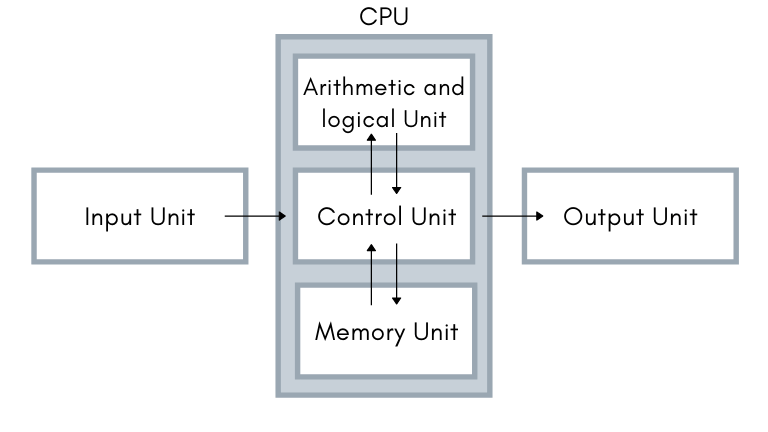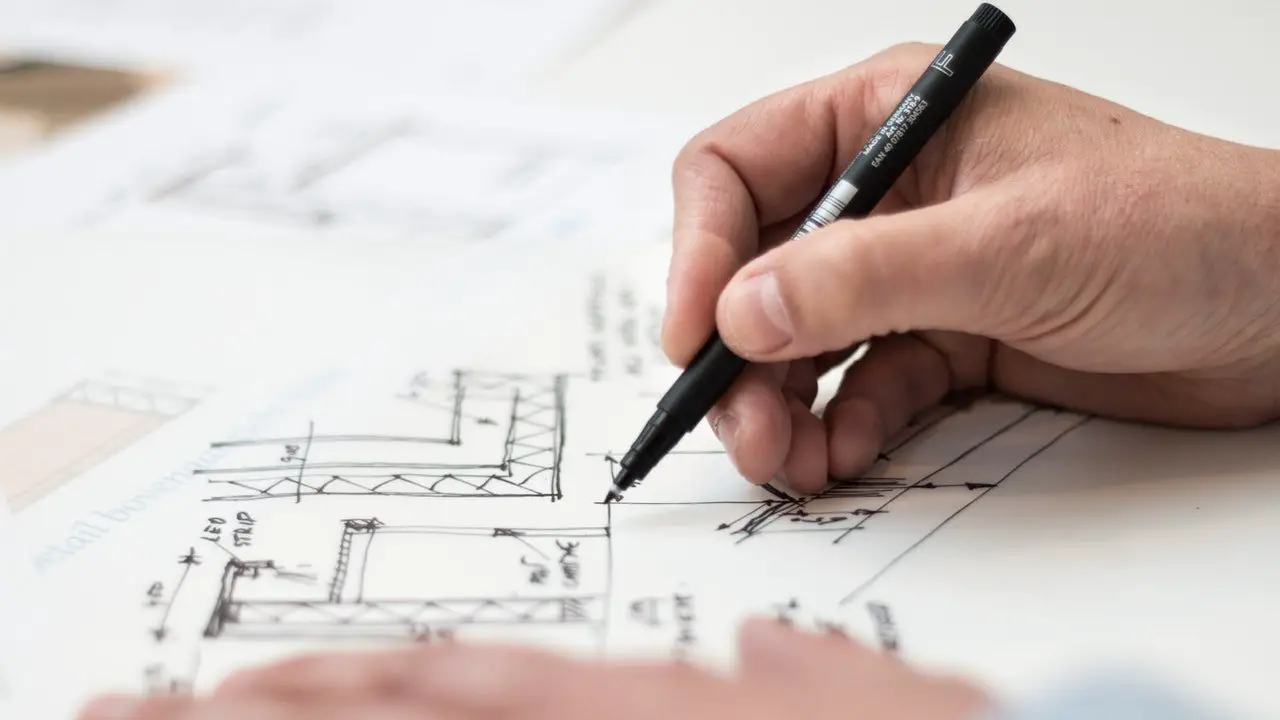The basic structure of computer system consists mainly of three parts which are the central processing unit (CPU), Input devices, and output devices. Further, the Central processing unit can be divided into two more parts i.e. control unit (CU) and arithmetic logic unit (ALU).
The basic structure of the computer describes a simple concept that the data is entered into the central processing unit with the help of input devices such as a keyboard, mouse, joystick, scanner, secondary storage devices, etc and then when the central processing unit receives the data from the input devices it has a pre-programmed set of instruction to follow and the result of instruction execution will lead to output and these output produce are mostly for the user which requires output devices such as a monitor, speaker, etc to understand the processed output data.
These functional unit of the computer makes the block diagram of the computer. The computer divides the task among these various functional units.

Central processing unit
The computer system’s most important part is the central processing unit. It is the brain of the computer and controls almost every unit in the computer system. The central processing unit also contains many parts such as arithmetic and logic units (ALU), control units (CU), and Memory Unit.
Control Unit
The control unit is a very important component of the central processing unit. The responsibility of the control unit is to take information that is being provided by the memory unit, when the control unit receives instruction from the memory unit then it converts into control signals that are sent to the central processor for further processing. The control unit also sends instructions to the arithmetic and logic unit to perform the right operation on the instructed operands and in this way the control unit executes the operation.
Arithmetic and logic unit
The work of the arithmetic and logic unit is responsible for performing mathematical instruction (add, subtract, multiply, divide) and logical instruction (greater than, less than, equal to, and, or, not) on the information that is in the form of binary from the control unit and on performing the set of instruction the results are returned to the control unit.
Memory Unit
The memory unit inside the central processing unit is responsible for holding information and depending on the importance of the information they can be arranged being closer and farther from the CPU. The more important the information the more near they are to the processing unit like cache memory and this memory can be as costly as they require high performance. The farther away unit can be the main memory that resides inside the computer for a longer period without getting used.
Input devices
The input devices are responsible for receiving the set of instructions that the user requires the computer machine to process. The input device converts the user action such as moving the cursor and striking keys on the keyboard in the machine-readable binary format of ones and zeros. To receive the instruction from the input device the central processing unit performs an interrupt and stops all the execution of any program and during that period, it receives information from the input device, and then this information is used when the central processing unit resumes the execution of the program.
Output device
The main responsibility of the output device is to convert the instruction that is provided by the central processing unit as an output which is in machine language or binary format to something that the user can perceive with senses such as to monitor, printer, speaker, projector, etc.
Aayush Kumar Gupta is the founder and creator of ExploringBits, a website dedicated to providing useful content for people passionate about Engineering and Technology. Aayush has completed his Bachelor of Technology (Computer Science & Engineering) from 2018-2022. From July 2022, Aayush has been working as a full-time Devops Engineer.

